Struggling with how to add page numbers in Word, especially when you need them to start on a specific page? You’re not alone.
This guide provides simple, step-by-step instructions with images to help you master page numbering in minutes, from basic insertion to advanced formatting for any document.
How to Insert Basic Page Numbers in Word
For most documents, adding page numbers is a straightforward process. Following these steps will get you started in less than a minute.
- First, open your document in Microsoft Word.
- Next, navigate to the Insert tab on the main ribbon at the top of the screen.
- In the “Header & Footer” group, click the Page Number button. A dropdown menu will appear.
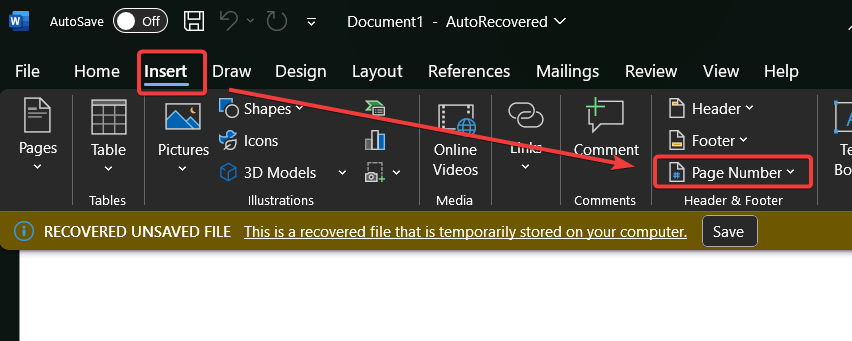
- From here, hover over the location where you want the numbers to appear (e.g., Top of Page, Bottom of Page). Then, select a pre-formatted style from the gallery that appears.
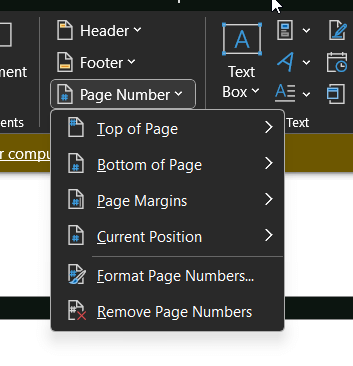
- Word will instantly add the page numbers to every page. To continue editing your document, simply double-click on the main body text to exit the Header & Footer view.
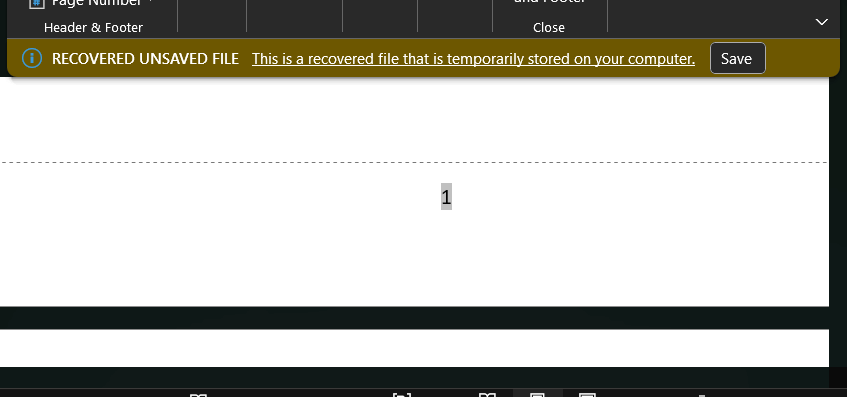
Pro-Tip: Using a Keyboard Shortcut: For a much faster method, place your cursor in the header or footer where you want the number to appear and press Alt+Shift+P. This keyboard shortcut instantly inserts a page number field, saving you several clicks.
How to Start Page Numbering on a Different Page
What if you need to skip the title page and table of contents? This is a common requirement for academic papers and reports.
The key is to use a “Section Break.”
Why this works: By default, Word treats your entire document as one single section with one set of formatting rules. Inserting a section break essentially creates mini-documents within your file, each capable of having its own unique formatting.
- First, place your cursor at the very end of the page before you want the numbering to start. For example, if you want page 1 to be the third page, place your cursor at the end of page two.
- Go to the Layout tab on the ribbon.
- Click on Breaks, and under “Section Breaks,” select Next Page.
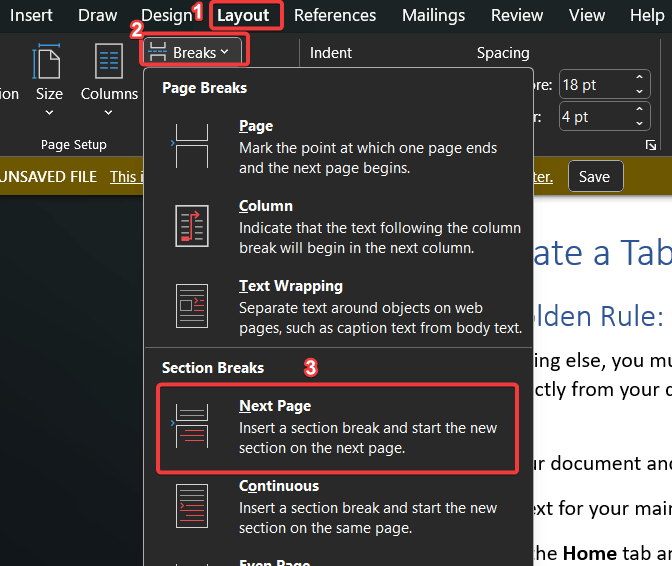
- Now, double-click on the header or footer of the page where you want numbering to begin (e.g., page 3).
- In the “Header & Footer” tab that appears, look for the Link to Previous button. It will be highlighted by default. Click it to deselect it. This is a crucial step that unlinks the new section’s header/footer from the previous one.
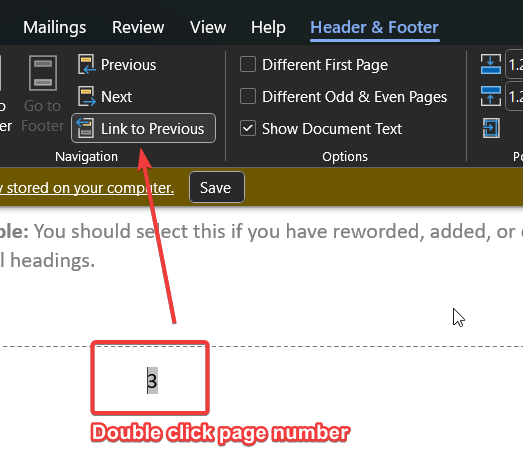
- Finally, with your cursor still in the header or footer, go to Insert > Page Number and choose your desired style.
- To ensure the numbering starts at “1,” go to Insert > Page Number > Format Page Numbers.
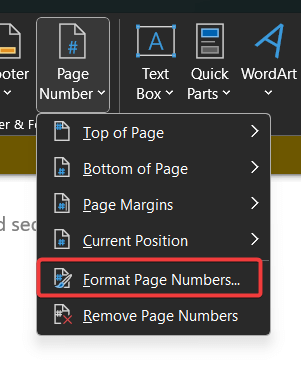
- In the dialog box, select Start at: and enter 1. Click OK.[Screenshot of the “Format Page Numbers” dialog box with “Start at: 1” selected]
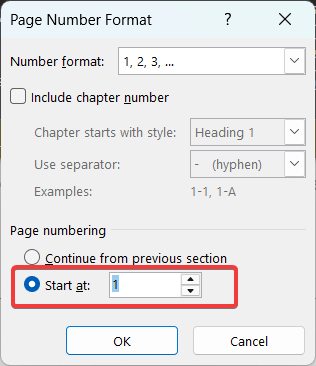
Voila! Now you have start the page number 1 at 3rd page.
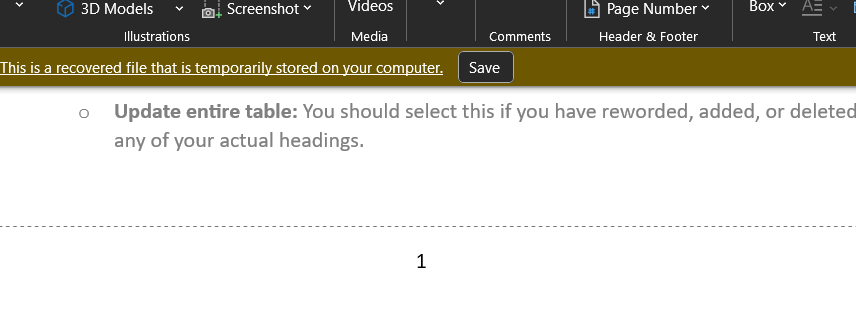
How to Format and Customize Page Numbers
Once your page numbers are in place, you can easily customize their appearance.
Changing Alignment and Style
While in the Header & Footer view, you can edit the page number just like any other text. Simply highlight it and use the Home tab to change the font, size, color, or alignment.
Using Roman Numerals or Other Formats
Go to Insert > Page Number > Format Page Numbers. In the “Number format” dropdown, select the style you want, such as Roman numerals (i, ii, iii…).
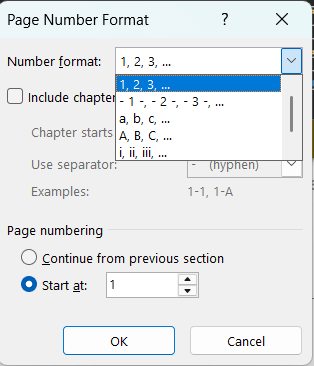
Advanced Formatting: Different Odd & Even Pages
For professional documents intended for printing, like books, you may need page numbers on the outer edge of each page (left on even pages, right on odd).
- Double-click your header or footer to open the Header & Footer tab.
- In the “Options” group, check the box for Different Odd & Even Pages.
- You will now have separate footers for odd and even pages. You can format each one independently—for example, by right-aligning the number on odd pages and left-aligning it on even pages.
- How to Delete a Page in Word: 5 Proven Methods
- How To Protect Word Docs With Passwords (Windows & Mac)
- How to Create a Table of Contents in Word (A Step-by-Step Guide)
Platform-Specific Tips: Word for Mac and Word Online
For Mac Users
The steps are nearly identical. The “Layout” tab is sometimes referred to as “Page Layout,” but the “Section Break” and “Link to Previous” functionalities work exactly the same way.
For Word Online Users
Word Online is great for basic tasks. You will find Page Numbers under the Insert tab. However, for complex formatting involving multiple section breaks, it is recommended to use the desktop version for full control.
How to Remove Page Numbers in Word
Navigate to Insert > Page Number and select Remove Page Numbers. This will remove them from the entire document or from the specific section you are editing.
ADVERTISEMENT Troubleshooting Common Page Numbering Issues
- Problem: My page number disappeared after adding a header.
- Solution: This happens if you delete the page number field. To have both, insert your page number first. Then, place your cursor next to the page number and type your header text.
- Problem: The page numbers are not updating automatically.
- Solution: The number was likely typed in manually. Delete it, then use the Insert > Page Number command to ensure it’s an automated field.
- Problem: My numbering resets to “1” in the middle of the document.
- Solution: This is a section break issue. Double-click the footer where it resets, go to Insert > Page Number > Format Page Numbers, and select Continue from previous section.
Frequently Asked Questions (FAQ)
Q: How do I add “Page X of Y” formatting?A: The easiest way is to go to Insert > Page Number and browse the style gallery. Word has several built-in “Page X of Y” formats under each position (Top of Page, Bottom of Page, etc.).
Q: Can I have different page number formats in the same document?A: Yes. This is the primary function of Section Breaks, as explained above. Each section can have its own independent page number formatting. For a deep dive into advanced document formatting, check out resources like the official Microsoft Office Support guide.
Conclusion
Mastering how to add page numbers in Word is a simple skill that dramatically improves the professionalism and organization of your documents. By following these steps—from basic shortcuts to advanced formatting for odd and even pages—you can confidently tackle any page numbering challenge.
We hope this guide has solved your problem! If you found it helpful, please consider sharing it with others. Do you have any other tips or questions? Let us know in the comments below.
IT Security / Cyber Security Experts.
Technology Enthusiasm.
Love to read, test and write about IT, Cyber Security and Technology.
The Geek coming from the things I love and how I look. - Problem: My page number disappeared after adding a header.
